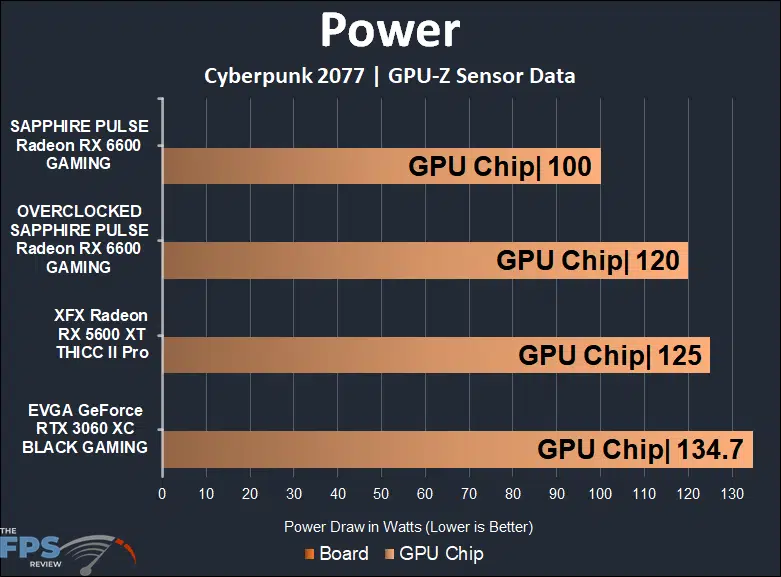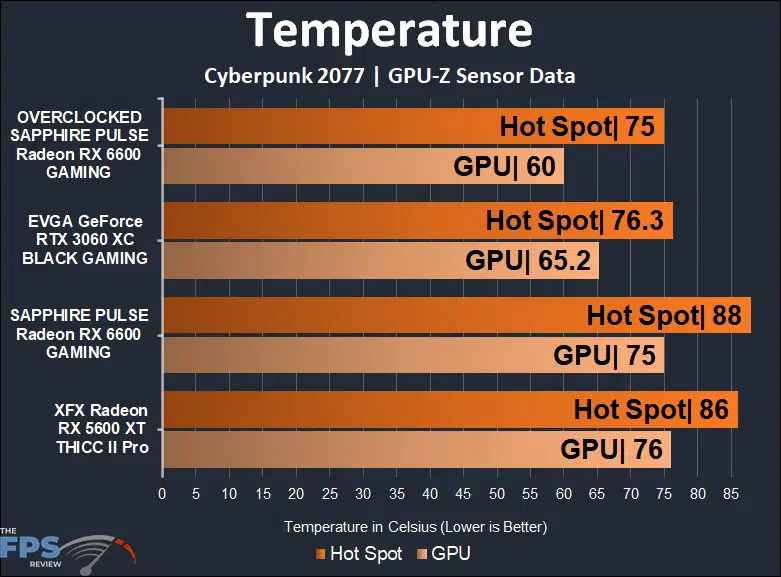Power and Temperature
To test the power and temperature we perform a manual run-through in Cyberpunk 2077 at “Ultra” settings for real-world in-game data. We use GPU-Z sensor data to record the results. We report on the GPU-Z sensor data for “Board Power” and “GPU Chip Power” when available for our Wattage data. For temperature data, we report the GPU (Edge Temp of the GPU) as well as Hot Spot (Junction Temperature) when available for our temperature data.

AMD claimed the Radeon RX 6600 would have a performance per Watt advantage, and they were right. The SAPPHIRE PULSE Radeon RX 6600 GAMING is pulling the least amount of GPU Chip Wattage out of the bunch here. It’s lower than the Radeon RX 5600 XT by 20% and lower than the GeForce RTX 3060 by 26%. Even overclocked at 20%+ Power Limit it’s still drawing less GPU Chip Power Wattage than anything here. The Radeon RX 6600 is a power-efficient GPU.

Most of these temperature differences are going to come down to the specific manufacturer’s cooling configuration. All of these video cards above have custom manufacturer cooling and designs. Also keep in mind the SAPPHIRE PULSE Radeon RX 6600 GAMING is a very small 7.6″ long video card, while the XFX Radeon RX 5600 XT THICC II Pro is a 10.5″ long video card. When you consider the size difference of the two, then it becomes even more amazing at the SAPPHIRE PULSE RX 6600 is operating at the same GPU temps as the Radeon RX 5600 XT video card with a much more robust cooler. By default, the EVGA RTX 3060 XC BLACK GAMING does run its GPU a little cooler.
When we turned up the fan speed for overclocking temps dropped dramatically on the SAPPHIRE PULSE Radeon RX 6600 GAMING. Remember, we only noted an automatic fan speed of 38% while gaming, so it runs at a low RPM, thus no noise, while gaming. Yet it still pulls off a decent temp range. To run it cooler, just increase the fan speed by 10-15% and it’ll run much cooler, and still will be quiet. We did not feel the cooling was holding back overclocking at all.
